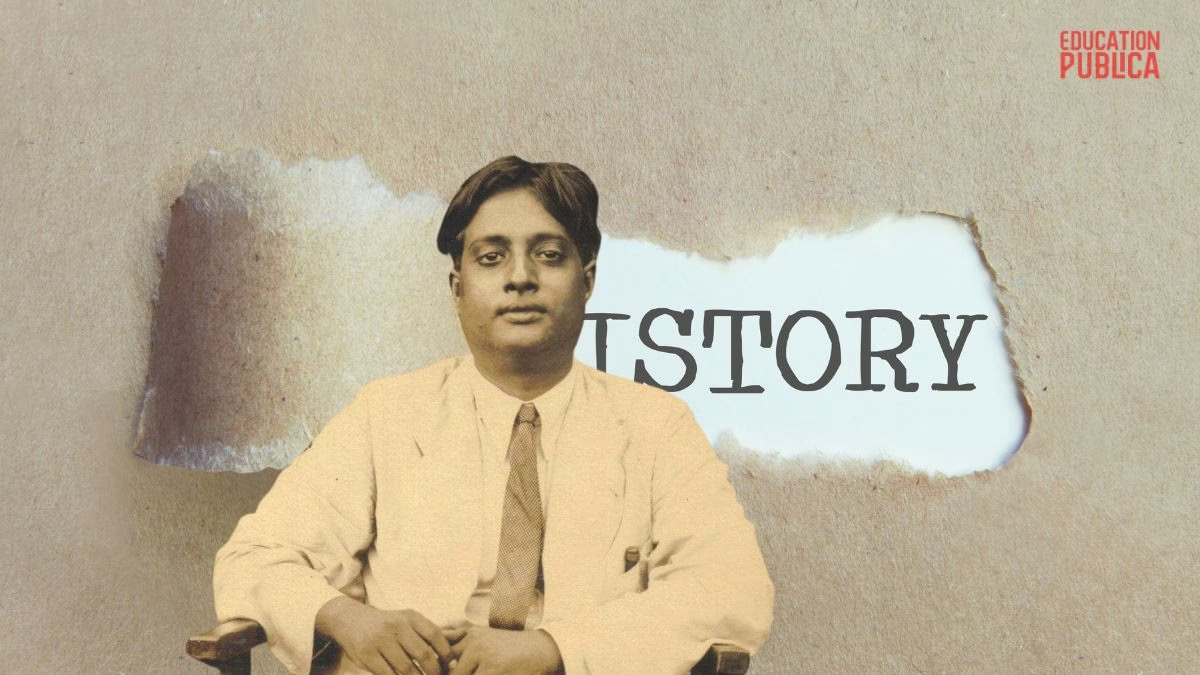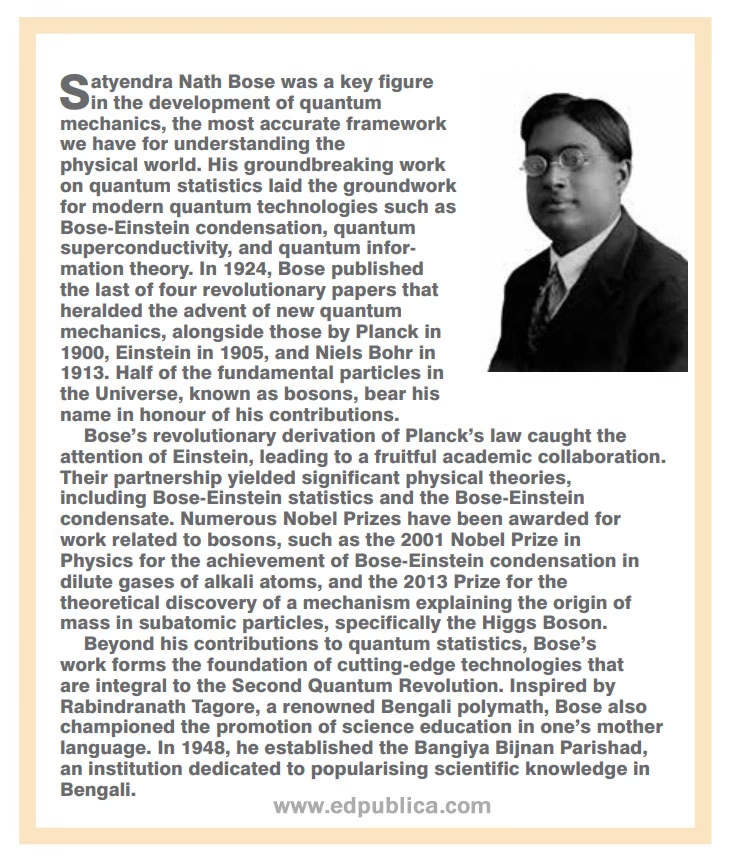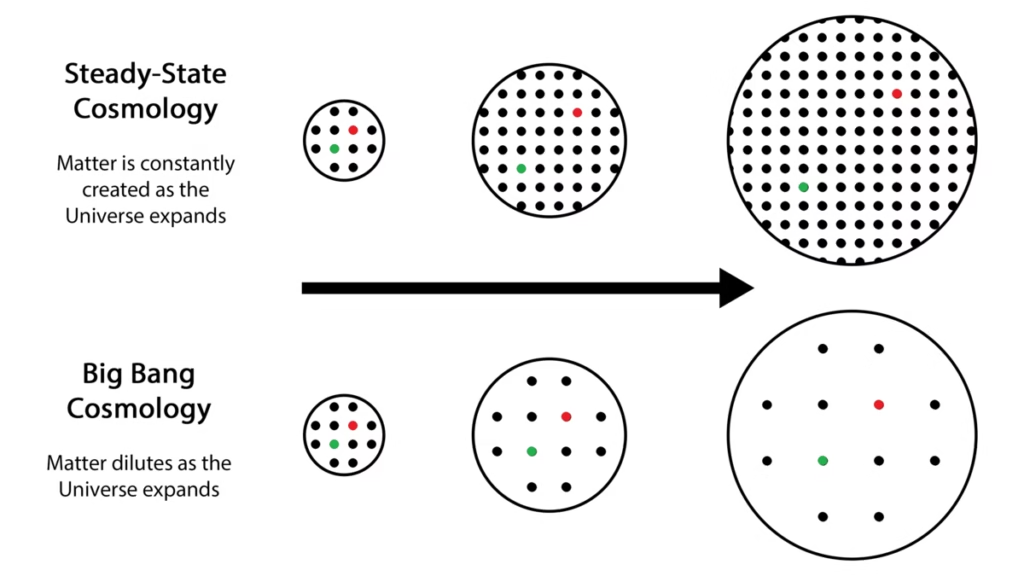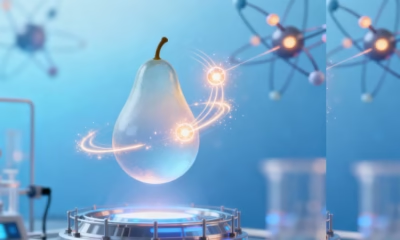Know The Scientist
The ‘pulsing’ star in science was denied a Nobel Prize
Jocelyn Bell Burnell outlived her discovery of ‘pulsars’ to become a living legend championing women scientists in academia.

Being a radio astronomer in the 1960s could easily have been a boring job if you had to read off data from a chart recorder for days. For Jocelyn Bell Burnell, the young 24 year-old Cambridge PhD student, this wasn’t even the steep part of it. But then she had to entertain boredom well before she would hit her glory at her prime. Paradoxically, it was young researchers in their 20s who spearheaded important advances in physics research by and large. And here was Burnell working whole days simply reading out flatlines signals like the one you see in an electrocardiogram monitor day after day. But then radio astronomy in the day was promising new discoveries.

After the Second World War, astronomers at Cambridge and Manchester repurposed old military radar receivers and equipment to point them to the heavens. The sky was going to get a pair of radio eyes. Cambridge had the bigwigs all working there, making crucial, game-changing discoveries – including Fred Hoyle, who discovered the origins of chemical elements in our universe, and Martin Ryle, who came up with the ‘aperture synthesis’ radio interferometry technique, to name a few. Even Anthony Hewish, Burnell’s supervisor, had a discovery to his credit. He discovered this scintillating effect when radio waves from outer galaxies crossed paths with the plasma in the solar wind.
Burnell opted to do her PhD under Hewish at Cambridge in 1967, where she helped build and operate a fleet of radio dipole antennas – dubbed the Interplanetary Scintillation Array – to study Hewish’s objects of interest in the Milky Way and beyond with greater detail. These antennas could help gather and translate radio waves into data that could be read by someone simply using a chart recorder. Burnell was kept in charge of reading the output.
Fate would have it that Burnell would spot an anomaly on one of the reams of chart paper – a ‘scruff’ pattern that periodically appeared three seconds before it disappeared again. After numerous sightings of this source, and then discovery of three others, Burnell and Hewish would report their findings in Nature the same year, to much interest within the wider astronomy community. Burnell would even write her PhD on this discovery.

The chart recorder paper in which Burnell first sighted the ‘scruff’, Credit: Billthom / Wikimedia
Astronomers would soon figure out that the radio source was the first reported sighting of a special type of neutron star called a pulsar – predicted way back in 1933 by Fritz Zwicky and Walter Baade. The Royal Swedish Academy of Sciences would award the Nobel Prize to Hewish, for the discovery, and Ryle for his interferometry techniques that helped enable the discovery. Burnell, who spotted it, was left out of the share.
What would the world be without pulsars?
But then it wasn’t the first time the Nobel committee had overlooked someone. If Burnell never discovered pulsars, then Nissan wouldn’t have released their sedan Pulsar in 1978, and nor would Bajaj Auto release a bike series with the same name a few decades later.
Pulsars are the cosmos version of atomic clocks, rotating extraordinarily fast while beaming radio waves like a jittering lighthouse that doesn’t fail to blip, maintaining accuracy to a billionth of a second every year
Keeping jokes aside, it can be seen how ‘pulsars’ truly changed astronomy forever. They’re amongst the densest known objects in the universe. As every student in astronomy was once taught, a tablespoon of neutron star soup would weigh a million tons! They’re exceedingly rare to spot that only 2,000 or so have been discovered until yet over the past five decades. Pulsars are the cosmos version of atomic clocks, rotating extraordinarily fast while beaming radio waves like a jittering lighthouse that doesn’t fail to blip, maintaining accuracy to a billionth of a second every year. Recently, pulsars helped astrophysicists confirm the existence of the gravitational wave background – the universe’s vibrations!

A pulsar, Credit: CSIRO / Wikimedia
How could Burnell have been ignored for the prize? When New York Times asked her in 1975 whether she felt snubbed, she said, “No, I don’t. I am quite delighted that Hewish and Ryle got the prize. I think its marvelous.”
That might have been modesty at display. But she wasn’t hiding a secret. It was well known that women in academia were outcasts. Burnell wasn’t snubbed by the Nobel, for she was an outcast in her own community of astronomers. It was fairly normal in Britain at the time for a young woman to be overlooked as a prospective scientist because of their gender. Prior to attending Cambridge, Burnell was denied graduate studies in physics at Manchester, because never admitted females previously and wasn’t intending to change that for her. This patriarchy wasn’t just a male affair. Girls from her school would ridicule her for choosing a boy’s subject.
For the young Jocelyn, it was the surprise of her life when she was offered a place to do her PhD from Cambridge after her undergraduate studies at Glasgow. She never quite fit in at Cambridge either, a deep seated insecurity rearing its ugly head – her ‘impostor syndrome’ – not realizing she was worth all the attention she was garnering. She said in the same NYT article, “I was a good deal more naive than Dr. Hewish. He was more aware of the implications.”
Finding the voice afterwards
But that’s not what astronomers thought so. Even before the prize was announced, Dr. Iosif Shklovsky, the winner of the 1972 Bruce Medal, sought Burnell out at the 1970 International Astronomical Union’s General Assembly saying, “Miss Bell, you have made the greatest astronomical discovery of the twentieth century.”
But then even one of the most important astrophysicists of the time, and fellow Cambridge colleague, Fred Hoyle stepped in. However, Hoyle didn’t do any favor for himself, or for Anthony Hewish, whom he falsely accused of stealing credit for Burnell’s achievement. In fact, Burnell, who left radio astronomy to pursue X-ray astronomy countered the allegations saying, Hoyle “drastically exaggerated the situation and overstated the case to the point of being factually incorrect.” Burnell was disappointed, as evidenced in that comment.
It would take much later for her to find the voice to express, when her true glory as a marshall within science became heard when she took on important leadership roles as the President of the Royal Astronomical Society and Institute of Physics, to name a few.
“A lot of the pulsar story happened because I was a minority person and a PhD student,” she said upon receipt of the 2018 Breakthrough Prize for her work on pulsars. In another recollection, she said, “At the time, the picture we had of the way science was done was there was a senior man, and a whole fleet of minions under that senior man.”
Last Sunday, we had the International Day for Women and Girls in STEM. It was three years ago, when I had the privilege myself of having attended Jocelyn Bell Burnell’s virtual lecture celebrating that day at Manchester. She recounted how she was rejected admission to Manchester, and pondering over how much society has changed over the years. It wasn’t easy, but that’s why she was unrelenting as a strong advocate for women and other minority representation in positions of power in academia.
She held herself with gravitas, much like a pulsar – a shining beacon for the world to see, remember and honor.
Know The Scientist
Remembering S.N. Bose, the underrated maestro in quantum physics
Rejected in Britain, celebrated by Einstein, here’s the story of S.N. Bose, the Indian physicist who formulated quantum statistics, now a bedrock theory in condensed matter physics.

It’s 1924, and Satyendra Nath Bose, going by S.N. Bose was a young physicist teaching in Dhaka, then British India. Grappled by an epiphany, he was desperate to have his solution, fixing a logical inconsistency in Planck’s radiation law, get published. He had his eyes on the British Philosophical Magazine, since word could spread to the leading physicists of the time, most if not all in Europe. But the paper was rejected without any explanations offered.
But he wasn’t going to give up just yet. Unrelenting, he sent another sealed envelope with his draft and this time a cover letter again, to Europe. One can imagine months later, Bose breathing out a sigh of relief when he finally got a positive response – from none other than the great man of physics himself – Albert Einstein.
In some ways, Bose and Einstein were similar. Both had no PhDs when they wrote their treatises that brought them into limelight. And Einstein introduced E=mc2 derived from special relativity with little fanfare, so did Bose who didn’t secure a publisher with his groundbreaking work that invented quantum statistics. He produced a novel derivation of the Planck radiation law, from the first principles of quantum theory.
This was a well-known problem that had plagued physicists since Max Planck, the father of quantum physics himself. Einstein himself had struggled time and again, to only have never resolved the problem. But Bose did, and too nonchalantly with a simple derivation from first principles grounded in quantum theory. For those who know some quantum theory, I’m referring to Bose’s profound recognition that the Maxwell-Boltzmann distribution that holds true for ideal gasses, fails for quantum particles. A technical treatment of the problem would reveal that photons, that are particles of light with the same energy and polarization, are indistinguishable from each other, as a result of the Pauli exclusion principle and Heisenberg’s uncertainty principle.
Fascinated and moved by what he read, Einstein was magnanimous enough to have Bose’s paper translated in German and published in the journal, Zeitschrift für Physik in Germany the same year. It would be the beginning of a brief, but productive professional collaboration between the two theoretical physicists, that would just open the doors to the quantum world much wider. Fascinatingly, last July marked the 100 years since Einstein submitted Bose’s paper, “Planck’s law and the quantum hypothesis” on his behalf to Zeitschrift fur Physik.
With the benefit of hindsight, Bose’s work was really nothing short of revolutionary for its time. However, a Nobel Committee member, the Swedish Oskar Klein – and theoretical physicist of repute – deemed it a mere advance in applied sciences, rather than a major conceptual advance. With hindsight again, it’s a known fact that Nobel Prizes are handed in for quantum jumps in technical advancements more than ever before. In fact, the 2001 Nobel Prize in Physics went to Carl Wieman, Eric Allin Cornell, and Wolfgang Ketterle for synthesizing the Bose-Einstein condensate, a prediction made actually by Einstein based on Bose’s new statistics. These condensates are created when atoms are cooled to near absolute zero temperature, thus attaining the quantum ground state. Atoms at this state possess some residual energy, or zero-point energy, marking a macroscopic phase transition much like a fourth state of matter in its own right.
Such were the changing times that Bose’s work received much attention gradually. To Bose himself, he was fine without a Nobel, saying, “I have got all the recognition I deserve”. A modest character and gentleman, he resonates a lot with the mental image of a scientist who’s a servant to the scientific discipline itself.

But what’s more upsetting is that, Bose is still a bit of a stranger in India, where he was born and lived. He studied physics at the Presidency College, Calcutta under the tutelage that saw other great Indian physicists, including Jagdish Chandra Bose and Meghnad Saha. He was awarded the Padma Vibhushan, the highest civilian award by the Government of India in 1954. Institutes have been named in his honour, but despite this, his reputation has little if no mention at all in public discourse.
To his physicists’ peers in his generation and beyond, he was recognized in scientific lexicology. Paul Dirac, the British physicist coined the name ‘bosons’ in Bose’s honor (‘bose-on’). These refer to quantum particles including photons and others with integer quantum spins, a formulation that arose only because of Bose’s invention of quantum statistics. In fact, the media popular, ‘god particle’, the Higgs boson, carries a bit of Bose as much as it does of Peter Higgs who shared the 2013 Nobel Prize in Physics with Francois Euglert for producing the hypothesis.
Know The Scientist
Narlikar – the rare Indian scientist who penned short stories
Jayant Narlikar has been one of the most prolific scientists, and science communicators India has ever produced. The octogenarian had died at his residence in Pune.

Jayant Narlikar passed away at his Pune residence on Tuesday. He was 86-years old, and had been diagnosed with cancer. With his demise, India lost a prolific scientist, writer, and institution builder.
In 2004, the government of India had honored Narlikar with the Padma Vibhushan, the second-highest civilian award, for his services to science and society. But that was not his first recognition from the Indian government. At the age of 26, he had received his first Padma Bhushan, in recognition for his work in cosmology, studying the universe’s large-scale structures. He helped contribute to derive Einstein’s field equations of gravity from a more general theory. That work, dubbed the Narlikar-Hoyle theory of gravity, was borne out a collaboration with Narlikar’s doctoral degree supervisor at Cambridge; Fred Hoyle, the then leading astrophysicist of his time.
Narlikar and the steady-state theory
Narlikar and Hoyle bonded over a shared skepticism towards the prevalent Big Bang hypothesis, which sought to extrapolate the universe’s ongoing expansion to its birth at some finite time in the past. However, Narlikar and Hoyle could not have been more opposed, mostly out of their own philosophical beliefs. They drew upon the works of 19th century Austrian physicist and philosopher, Ernest Mach, in rejecting a theory discussing the universe’s beginning in the absence of a reference frame. As such, Narlikar was a strong proponent of Hoyle’s steady-state model of the universe, in which the universe is infinite in extent, and indefinitely old. As such, the steady-state theorists explained away the universe’s expansion to matter being spawned into existence from this vacuum at every instant, aka a C-field.

However, the steady-state’s predictions did not hold up in face of evidence the universe expands over time. Nor did its successive avatar, the quasi-steady state theory devised sway scientific consensus. The death knell came when evidence of the cosmic microwave background (aka the CMB) was discovered in 1964.
Despite steady-state’s failure, it provided healthy rivalry to the Big Bang from the 1940s to the 60s, providing opportunities for astronomers to compare observations to precise predictions. In the words of the Nobel laureate Steven Weinberg, “In a sense, this disagreement is a credit to the model; alone among all cosmologies, the steady state model makes such definite predictions that it can be disproved even with the limited observational evidence at our disposal.”
The Kalinga winning short-story writer
Narlikar was more than just a cosmologist, studying the large-scale structure of the universe. He also had been an acclaimed science fiction writer, with his works penned in English, Hindi, and in his vernacular, Marathi. His famous work was a short-story, Dhoomekethu (The Comet), revolving around themes of superstition, faith, rational and scientific thinking. Published in Marathi in 1976, with translations available in Hindi, the story was adapted later into a two-hour film bearing the same name. In 1985, the film aired on the state-owned television broadcasting channels, Doordarshan.
In a way, he was India’s Carl Sagan, airing episodes explaining astronomical concepts, with children being his target audience. The seventeen-episode show, Brahmand (The Universe), aired in 1994, to popular acclaim. One of his most popular books, Akashashi Jadle Nathe (Sky-Rooted Relationship), remains popular. An e-book version in Hindi is available on Goodreads, with 470 reviewers lending an average rating of 4.7 out of 5.
His efforts was honored with an international prize. In 1996, he received the much-coveted Kalinga Prize for the Popularization of Science, awarded annually in India by the United Nations Educational, Scientific and Cultural Organization (UNESCO), “in recognition of his efforts to popularize science through print and electronic media.” Narlikar had been only the second Indian at the time, after the popular science writer Jagjit Singh, to have received the award.
When Narlikar returned to India, accepting a position at the Tata Institute of Fundamental Research (TIFR), he realized that the fruits of astrophysical research did not flourish outside central institutions. Though Bengaluru had an Indian Institute of Astrophysics, Narlikar envisioned basing a research culture paralleling his time at Cambridge. Hence, the Inter-University Centre for Astronomy and Astrophysics (IUCAA) was born in 1988, and Narlikar was appointed its founding director. Arguably, his most visible legacy would have been to shape India’s astrophysical research culture through his work with the IUCAA (pronounced “eye-you-ka”).
Know The Scientist
Dr. Nikku Madhusudhan Brings Us Closer to Finding Life Beyond Earth
Dr. Madhusudhan, a leading Indian-British astrophysicist at the University of Cambridge, has long been on the frontlines of the search for extraterrestrial life

Somewhere in the vast, cold dark of the cosmos, a planet orbits a distant star. It’s not a place you’d expect to find life—but if Dr. Nikku Madhusudhan is right, that assumption may soon be history.
Dr. Madhusudhan, a leading Indian-British astrophysicist at the University of Cambridge, has long been on the frontlines of the search for extraterrestrial life or what we call the alien life. This month, his team made headlines around the world after revealing what could be the strongest evidence yet of life beyond Earth—on a distant exoplanet known as K2-18b.
Using data from NASA’s James Webb Space Telescope, Madhusudhan and his collaborators detected atmospheric signatures of molecules commonly associated with biological processes on Earth—specifically, gases produced by marine phytoplankton and certain bacteria. Their analysis suggests a staggering 99.7% probability that these molecules could be linked to living organisms.
“This marked the first detection of carbon-bearing molecules in the atmosphere of an exoplanet located within the habitable zone,” the University of Cambridge said in a press statement. “The findings align with theoretical models of a ‘Hycean’ planet — a potentially habitable, ocean-covered world enveloped by a hydrogen-rich atmosphere.”
Born in India, Dr. Madhusudhan began his journey in science with an engineering degree from IIT (BHU) Varanasi
In addition, a fainter signal suggested there could be other unexplained processes occurring on K2-18b. “We didn’t know for sure whether the signal we saw last time was due to DMS, but just the hint of it was exciting enough for us to have another look with JWST using a different instrument,” said Professor Nikku Madhusudhan in a news report released by the University of Cambridge.
The man behind the mission
Born in India, Dr. Madhusudhan began his journey in science with an engineering degree from IIT (BHU) Varanasi. But it was during his time at the Massachusetts Institute of Technology (MIT), under the mentorship of exoplanet pioneer Prof. Sara Seager, that he found his calling. His doctoral work—developing methods to retrieve data from exoplanet atmospheres—would go on to form the backbone of much of today’s planetary climate modeling.
Now a professor at the University of Cambridge’s Institute of Astronomy, Madhusudhan leads research that straddles the line between science fiction and frontier science.
A Universe of Firsts
Over the years, his work has broken new ground in our understanding of alien worlds. He was among the first to suggest the concept of “Hycean planets”—oceans of liquid water beneath hydrogen-rich atmospheres, conditions which may be ideal for life. He also led the detection of titanium oxide in the atmosphere of WASP-19b and pioneered studies of K2-18b, the same exoplanet now back in the spotlight.
His team’s recent findings on K2-18b may be the closest humanity has ever come to detecting life elsewhere in the universe.
Accolades and impact
Madhusudhan’s contributions have earned him global recognition. He received the prestigious IUPAP Young Scientist Medal in 2016 and the MERAC Prize in Theoretical Astrophysics in 2019. In 2014, the Astronomical Society of India awarded him the Vainu Bappu Gold Medal for outstanding contributions to astrophysics by a scientist under 35.
But for Madhusudhan, the real reward lies in the questions that remain unanswered.
Looking ahead
Madhusudhan cautions that, while the findings are promising, more data is needed before drawing conclusions about the presence of life on another planet. He remains cautiously optimistic but notes that the observations on K2-18b could also be explained by previously unknown chemical processes. Together with his colleagues, he plans to pursue further theoretical and experimental studies to investigate whether compounds like DMS and DMDS could be produced through non-biological means at the levels currently detected.
Beyond the lab, Madhusudhan remains dedicated to mentoring students and advancing scientific outreach. He’s a firm believer that the next big discovery might come from a student inspired by the stars, just as he once was.
As scientists prepare for the next wave of data and the world watches closely, one thing is clear: thanks to minds like Dr. Nikku Madhusudhan’s, the search for life beyond Earth is no longer a distant dream—it’s a scientific reality within reach.

 Space & Physics5 months ago
Space & Physics5 months agoIs Time Travel Possible? Exploring the Science Behind the Concept

 Know The Scientist5 months ago
Know The Scientist5 months agoNarlikar – the rare Indian scientist who penned short stories

 Society4 months ago
Society4 months agoShukla is now India’s first astronaut in decades to visit outer space

 Earth5 months ago
Earth5 months agoWorld Environment Day 2025: “Beating plastic pollution”

 Society5 months ago
Society5 months agoAxiom-4 will see an Indian astronaut depart for outer space after 41 years

 The Sciences4 months ago
The Sciences4 months agoHow a Human-Inspired Algorithm Is Revolutionizing Machine Repair Models in the Wake of Global Disruptions

 Space & Physics3 months ago
Space & Physics3 months agoJoint NASA-ISRO radar satellite is the most powerful built to date

 Space & Physics6 months ago
Space & Physics6 months agoMIT Physicists Capture First-Ever Images of Freely Interacting Atoms in Space





































